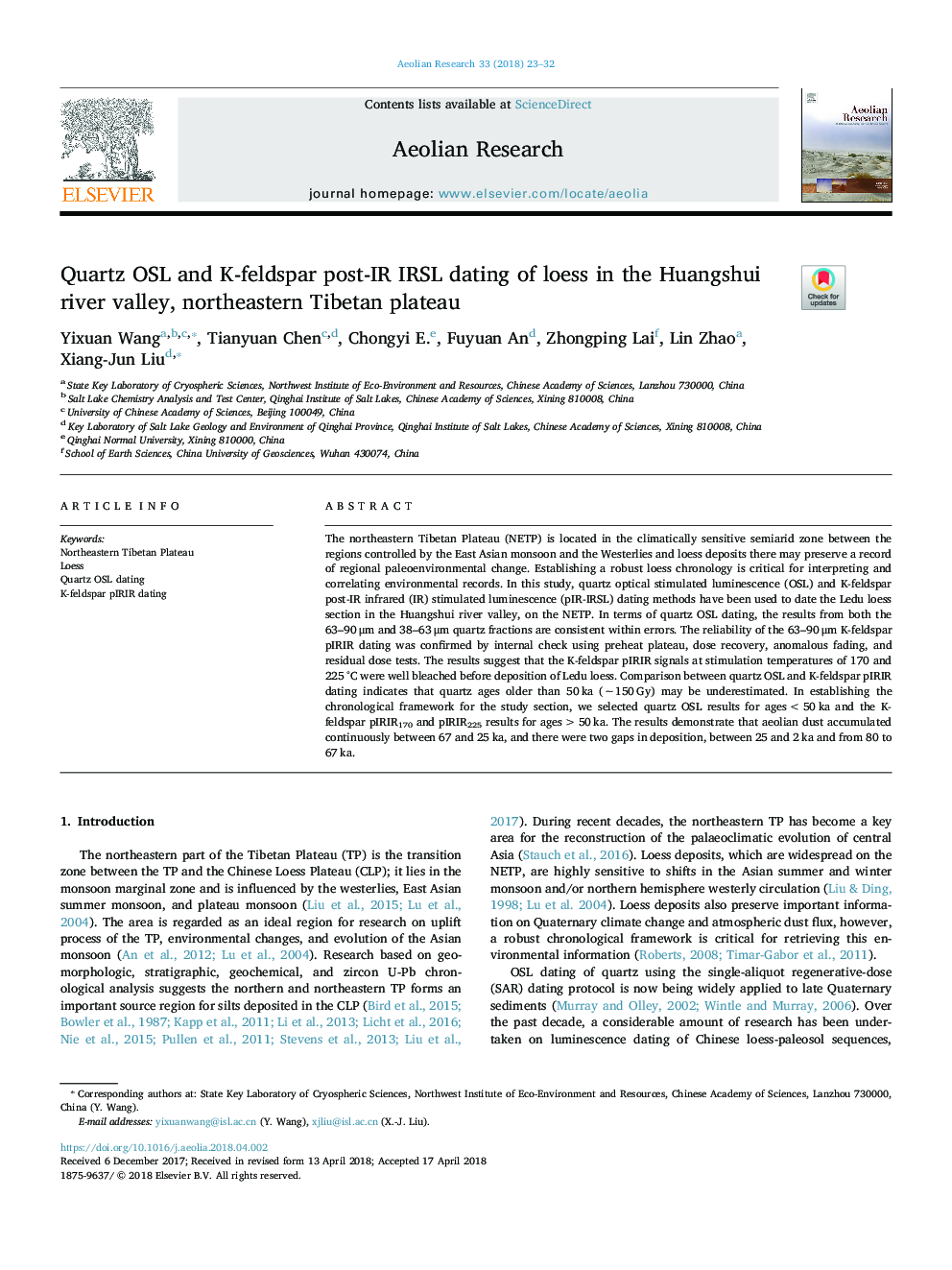| Article ID | Journal | Published Year | Pages | File Type |
|---|---|---|---|---|
| 8906213 | Aeolian Research | 2018 | 10 Pages |
Abstract
The northeastern Tibetan Plateau (NETP) is located in the climatically sensitive semiarid zone between the regions controlled by the East Asian monsoon and the Westerlies and loess deposits there may preserve a record of regional paleoenvironmental change. Establishing a robust loess chronology is critical for interpreting and correlating environmental records. In this study, quartz optical stimulated luminescence (OSL) and K-feldspar post-IR infrared (IR) stimulated luminescence (pIR-IRSL) dating methods have been used to date the Ledu loess section in the Huangshui river valley, on the NETP. In terms of quartz OSL dating, the results from both the 63-90â¯Î¼m and 38-63â¯Î¼m quartz fractions are consistent within errors. The reliability of the 63-90â¯Î¼m K-feldspar pIRIR dating was confirmed by internal check using preheat plateau, dose recovery, anomalous fading, and residual dose tests. The results suggest that the K-feldspar pIRIR signals at stimulation temperatures of 170 and 225â¯Â°C were well bleached before deposition of Ledu loess. Comparison between quartz OSL and K-feldspar pIRIR dating indicates that quartz ages older than 50â¯ka (â¼150â¯Gy) may be underestimated. In establishing the chronological framework for the study section, we selected quartz OSL results for ages <50â¯ka and the K-feldspar pIRIR170 and pIRIR225 results for ages >50â¯ka. The results demonstrate that aeolian dust accumulated continuously between 67 and 25â¯ka, and there were two gaps in deposition, between 25 and 2â¯ka and from 80 to 67â¯ka.
Related Topics
Physical Sciences and Engineering
Earth and Planetary Sciences
Atmospheric Science
Authors
Yixuan Wang, Tianyuan Chen, Chongyi E., Fuyuan An, Zhongping Lai, Lin Zhao, Xiang-Jun Liu,
